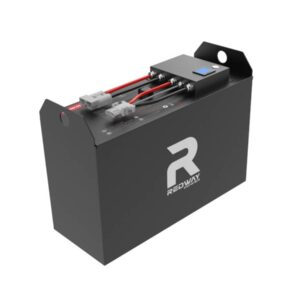What is the inspection to check for battery?
Battery inspection involves systematic checks to assess health and performance. Core methods include voltage measurement (static/dynamic), load testing, internal resistance analysis, and capacity verification. Advanced diagnostics combine visual inspection for physical defects with electrochemical evaluations using tools like multimeters and battery testers. Pro Tip: Always measure voltage 30 minutes post-charging for stabilized readings.
Optimal Forklift Battery Installation and Maintenance
What visual indicators reveal battery issues?
Visible defects like case bulging, terminal corrosion, or electrolyte leakage signal degradation. Cracks exceeding 2mm or terminal oxidation reducing conductivity by >40% require immediate replacement.

Beyond surface checks, inspect battery vents for blockages—restricted airflow accelerates thermal stress. A bulging case indicates internal pressure buildup from gas accumulation, often caused by overcharging. For example, a swollen 12V automotive battery may show voltage drops below 10V under load. Pro Tip: Use pH test strips near leakage points—acidic residue (pH <3) confirms electrolyte seepage. Transitional phrase: While visible flaws are obvious, some failures lurk beneath the surface.
How does voltage testing determine battery health?
Static voltage (12.6V+ for healthy 12V batteries) and cranking voltage (>9.6V during ignition) are key metrics. Voltage below 12.2V at rest indicates <50% charge.
Advanced testing involves comparing open-circuit voltage (OCV) and loaded voltage. A 12V battery maintaining ≥10.5V under 50% load for 15 seconds passes basic functionality. Transitional phrase: However, voltage alone doesn’t reveal capacity loss—a battery showing 12.4V might only retain 60% original capacity. Pro Tip: Measure voltage at terminals, not cable ends, to detect connection resistance.
| Test Type | Healthy Range | Failure Threshold |
|---|---|---|
| Static Voltage | 12.6-12.8V | <11.8V |
| Cranking Voltage | >9.6V | <9.0V |
When is load testing necessary?
Load tests apply 50-70% CCA rating for 15 seconds. Voltage must stay above 9.6V for 12V systems—a 3V drop indicates 30% capacity loss.
Modern carbon pile testers simulate starter motor loads without engine cranking. For instance, testing a 600CCA battery requires applying 300A. Transitional phrase: But what if voltage recovers slowly post-test? Delayed rebound suggests sulfation. Pro Tip: Always test at 20-25°C—cold batteries show artificially low readings.
Why measure internal resistance?
Internal resistance (≤5mΩ for new 12V) reveals hidden degradation. A 20% increase from baseline indicates 15% capacity loss.
Advanced meters use AC impedance spectroscopy. For example, a reading of 8mΩ in a 60Ah battery suggests reduced charge acceptance. Transitional phrase: Consider this—low resistance with high voltage sag points to plate sulfation. Pro Tip: Compare resistance across cells in multi-bank systems—variances >15% require balancing.
| Battery Age | Typical Resistance | Action Threshold |
|---|---|---|
| New | 3-5mΩ | – |
| 2 Years | 6-8mΩ | >10mΩ |
What defines capacity testing?
Capacity verification discharges at C/20 rate to 10.5V cutoff. A 60Ah battery delivering <54Ah needs replacement.
Automated testers track discharge curves—slope changes indicate active material loss. Transitional phrase: Imagine a 5-year-old battery completing 80% discharge in 4 hours instead of 5—this 20% capacity loss warrants retirement. Pro Tip: Conduct capacity tests quarterly for mission-critical applications.
Battery Expert Insight
FAQs
Can I test batteries without professional tools?
Basic voltage checks work for preliminary assessment, but load/resistance tests require calibrated equipment. Home methods lack diagnostic depth.
How often should batteries be inspected?
Monthly visual checks, quarterly voltage tests, and annual capacity verification for automotive use. Industrial batteries need bi-monthly impedance scans.
What voltage indicates a dead 12V battery?
Persistent readings below 11.8V at rest suggest irreversible sulfation. Recovery attempts rarely restore >70% capacity.
